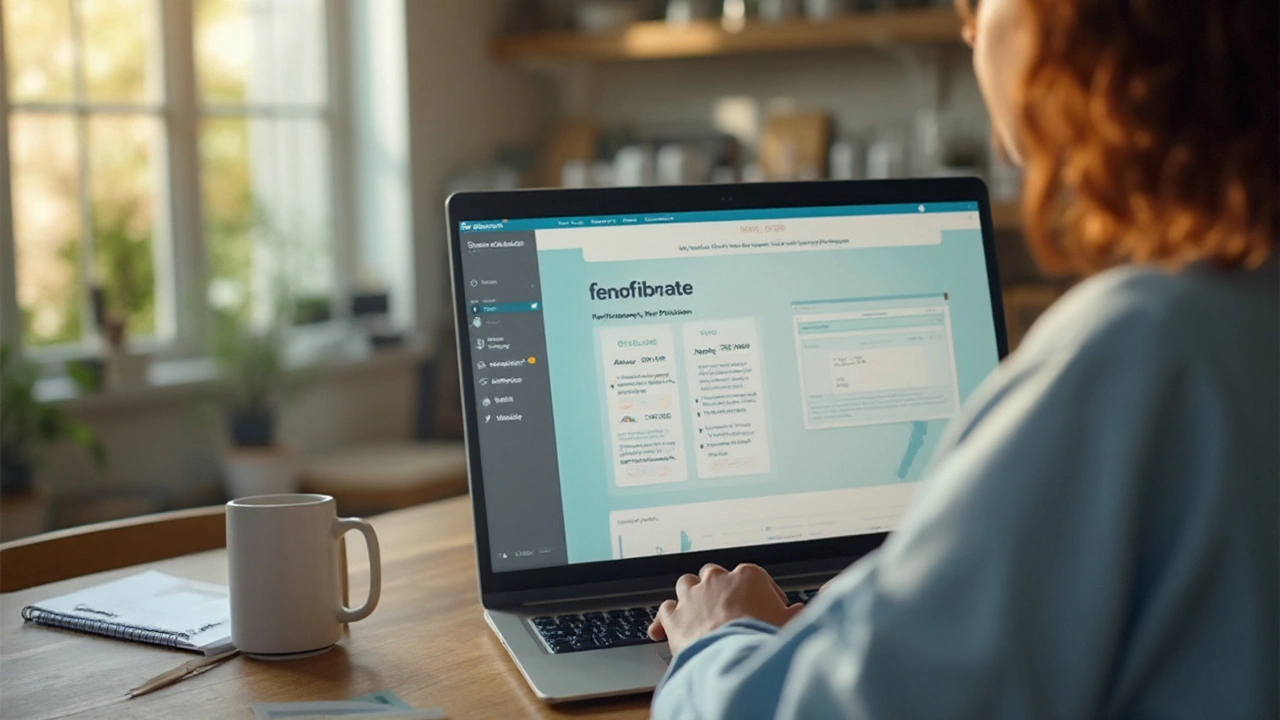Fenofibrate Prescription Guide: Dosage, Safety, and What to Expect
If your doctor just mentioned fenofibrate, you probably wonder why and how to use it. In plain words, fenofibrate is a cholesterol‑lowering pill that mainly cuts triglycerides and raises good HDL. It’s often prescribed when diet alone isn’t enough to control high triglyceride levels or mixed‑type dyslipidemia.
First thing: you’ll get a specific dose based on your lab numbers, age, and kidney function. Most adults start with 145 mg once a day, taken with food to improve absorption and reduce stomach upset. Some brands come in 160 mg or 200 mg tablets, and doctors may adjust the amount if your blood tests show you need more control.
How Doctors Decide on Fenofibrate
Doctors look at three main factors before writing a fenofibrate script. One, your fasting triglyceride level—if it’s over 200 mg/dL, fenofibrate becomes a strong option. Two, the overall lipid profile; if LDL is already low but triglycerides are high, fenofibrate targets the right problem. Three, any kidney or liver issues—because the drug is processed mainly by the liver and excreted by the kidneys.
When you have chronic kidney disease (CKD), the doctor may pick a lower dose or avoid fenofibrate altogether. The same goes for severe liver disease. Your physician will also check for a history of gallbladder disease, as fenofibrate can sometimes trigger gallstones.
Insurance coverage can affect the brand you receive. Generic fenofibrate works just as well as brand‑name versions, but some insurers only reimburse the generic. If you’re asked to switch, the dosage stays the same; only the pill’s appearance changes.
Managing Side Effects and Interactions
Most people tolerate fenofibrate well, but a few experience mild side effects. The most common complaints are stomach cramps, nausea, or a temporary rise in liver enzymes. If you notice persistent abdominal pain or yellowing of the skin, call your doctor right away.
Drug interactions matter. Fenofibrate can boost the effect of blood thinners like warfarin, so your doctor may order more frequent INR checks. It also interacts with some statins, especially high‑dose simvastatin, raising the risk of muscle damage. Tell your pharmacist about every medication you’re on, including over‑the‑counter supplements.
Alcohol can worsen triglyceride levels, making fenofibrate less effective. Cutting back on sugary drinks and refined carbs helps the drug do its job faster. Aim for a balanced diet rich in omega‑3 fish oils, which can complement fenofibrate’s action.
Finally, stay on schedule. Skipping doses can cause your triglycerides to bounce back, while taking extra pills won’t speed up results and may increase side‑effect risk. Set a daily alarm or link the pill to an existing habit, like brushing your teeth.
In short, fenofibrate is a targeted tool for high triglycerides and mixed dyslipidemia. Your doctor tailors the dose, monitors your labs, and watches for interactions. By eating right, avoiding excessive alcohol, and sticking to the prescribed schedule, you’ll give fenofibrate the best chance to keep your heart health in check.
How and Where to Buy Fenofibrate Online in New Zealand (2025 Safe Buyer’s Guide)
A 2025, NZ-focused guide to buying fenofibrate online-where to order, what it costs, how to do it legally, and how to avoid sketchy sites. Clear steps, checks, and tips.
